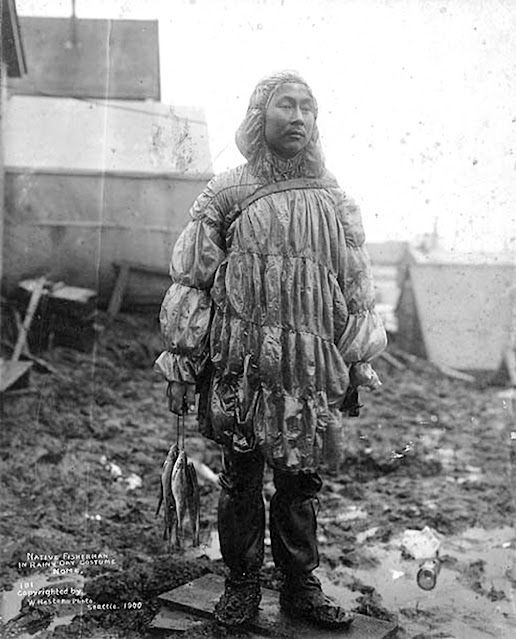
Before synthetic fabrics, most raincoats were made of fabric coated with wax or rubber, which made them stiff and heavy. Meanwhile, the Inuit people of the far north had lightweight, flexible, breathable, waterproof outerwear made out of the intestines of seals, walrus, whales, and sometimes even bears. As you can imagine, whales provided the most usable material.
By nature, intestines are strong, barely permeable, and somewhat stretchy, perfect for sausage casing and even better for rainwear. The intestines were cleaned, inflated, dried, and cut into strips. Then they were stitched together using a special waterproof sewing method. The resulting garments were worn overtop the Inuits' usual warm clothing for outdoor chores in rainy weather, and especially used to protect hunters and fishermen in kayaks from a deadly cold soaking. The McCord Stewart Museum in Montreal studied and restored one of these coats a few years ago and documented their construction. Read more about the intestinal raincoats and see plenty of pictures at Vintage Everyday. -via Messy Nessy Chic











